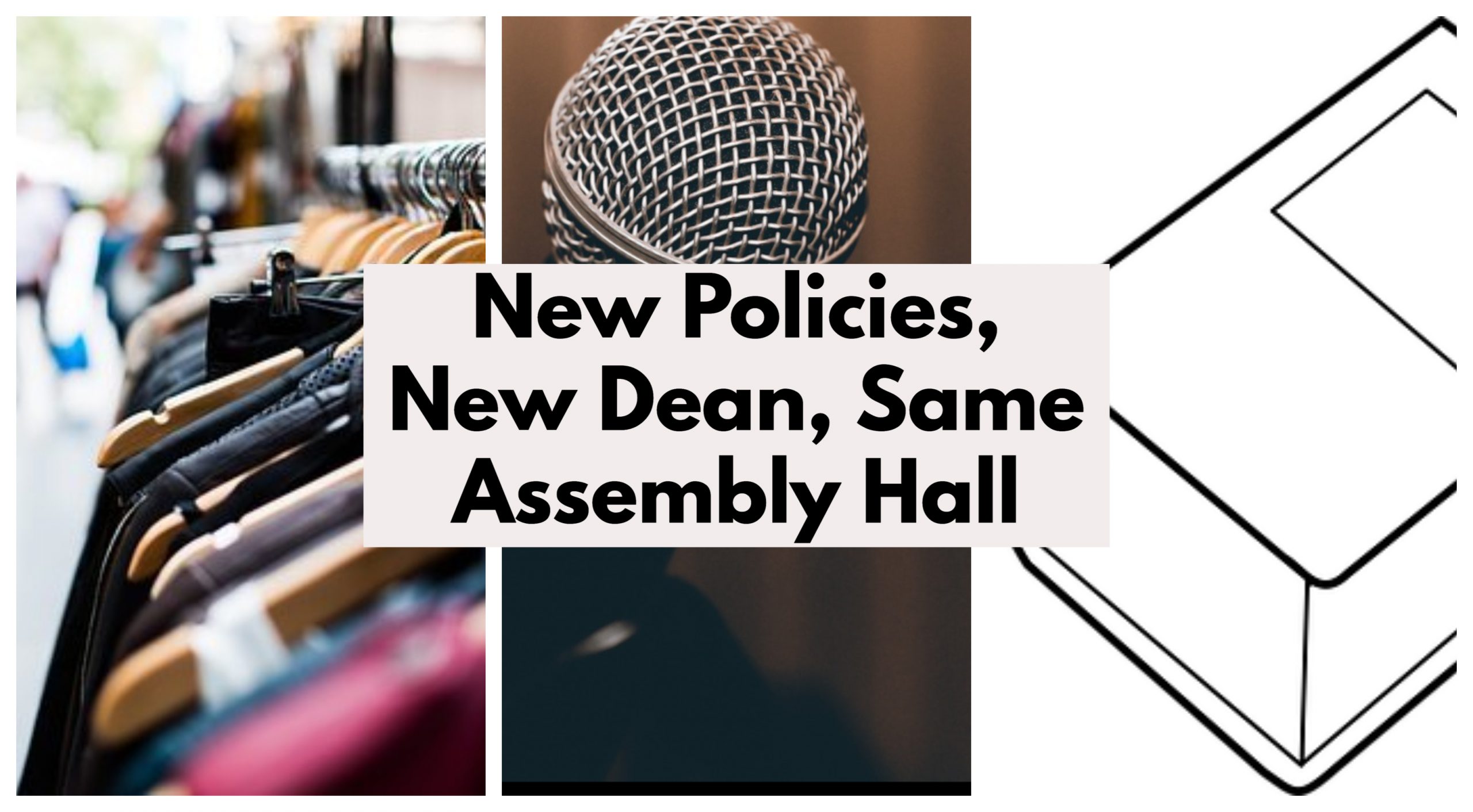By William Biersach (’22)
September 20, 2021
In the first assembly of the year, deans Frasher and Gould outlined two new policies in a school-wide address. This was the first time the senior class was in Kenan for an assembly since sophomore year. And it was Mr. Gould’s first appearance in front of the Upper School as dean. The two deans announced a new and simpler dress code and an updated sexual misconduct policy.

The reintroduction of assemblies is promising for reuniting the student body and for more effectively addressing issues of the student body. Two of the biggest issues facing the Upper School are the dress code and the sexual misconduct policy. Both policies result from years of student petitioning and collaboration with the administration.
Origins of the Updated Dress Code
The most recent dress code change was roughly three years ago. Championed by Emily Norry (‘21), this updated dress code policy builds on the previous policy update. The policy is based on input from the SHE Club, Evanston Township High School, and Oregon NOW.

What exactly is the new dress code?
The updated dress code simply states: “Clothes must be worn in a way such that genitals, buttocks, breasts and nipples are fully covered with opaque fabric. There are no coverage requirements for cleavage.” Students must wear some sort of shirt, pants, and shoes. Such a shirt must cover the front, back, and sides. The administration updated what students may now wear, which includes things like hats, tank tops (for all genders), ripped jeans, and more. The most significant update to the policy, however, is rhetorical. “All students and staff should understand that they are responsible for managing their own personal ‘distractions.’” This added sentence reframes the purpose and attitude of our school’s dress code in a way that is equitable.
Origins of the Sexual Misconduct Policy Update
The sexual misconduct policy began when a committee of students last year came up with a huge policy proposal on sexual misconduct that they presented to the administration. This ad hoc task force of students first presented to the administration before presenting to SLAB, the Student Life Advisory Board. SLAB helped this committee edit their presentation and helped present the proposal to the administration for a second time. This summer, the administration implemented the new sexual misconduct policy into an update of the student handbook this summer.
What is new about the policy?
The new sexual misconduct policy allows for more transparency in the process, and it promises greater protection for reporting students and the victim even before the administration fully investigates a given case. For example, it is now school policy to alter the schedules of individuals involved in a sexual misconduct case to “avoid unnecessary conduct” that could cause a disruption or make a student even more uncomfortable. The update includes new definitions that distinguish sexual misconduct and sexual assault. The policy also states that the school reserves the right to investigate and take disciplinary action regarding cases that happen both on and off campus.
How will this policy work?
The handbook update and the assembly both recognize the unique nature of each sexual misconduct case. For this reason, the update includes a list of potential responses to sexual misconduct cases. Examples of responses include: “Conversation with a dean, counselor and/or division director, Involvement of the student’s parent(s) or caregiver(s), Mediation between students and families, Mandated counseling for the student, Disciplinary action up to and including suspension or expulsion.”
Conclusion
To conclude, Mrs. Frasher and Mr. Gould offered more resources via the new Veracross button titled “Sexual Misconduct Resources.” Chaz Strickland (‘22), chair of SLAB, summarized the update well: “A lot more still needs to happen, but every step we take for the safety of all at the Upper School is a step in the right direction.”
